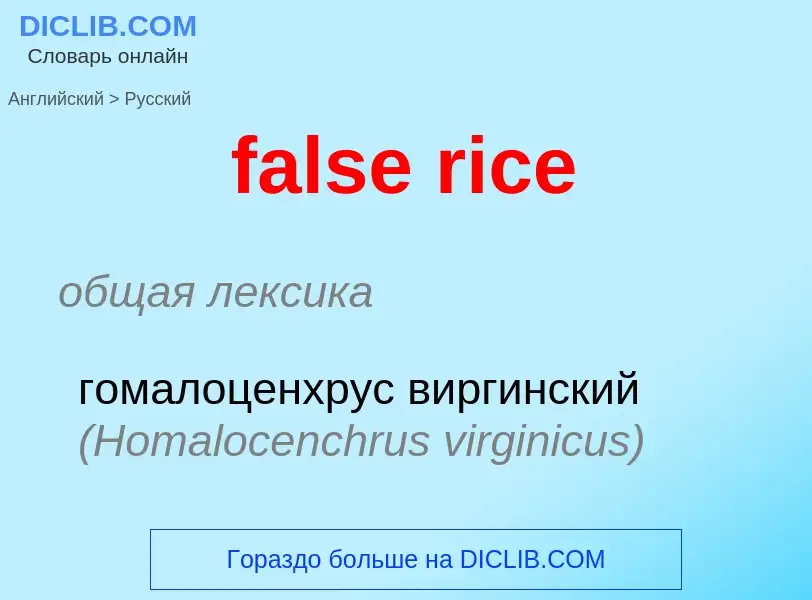Перевод и анализ слов искусственным интеллектом ChatGPT
На этой странице Вы можете получить подробный анализ слова или словосочетания, произведенный с помощью лучшей на сегодняшний день технологии искусственного интеллекта:
- как употребляется слово
- частота употребления
- используется оно чаще в устной или письменной речи
- варианты перевода слова
- примеры употребления (несколько фраз с переводом)
- этимология
false rice - перевод на русский
общая лексика
гомалоценхрус виргинский (Homalocenchrus virginicus)
Смотрите также
Определение
Википедия

Pseudoryzomys simplex, also known as the Brazilian false rice rat or false oryzomys, is a species of rodent in the family Cricetidae from south-central South America. It is found in lowland palm savanna and thorn scrub habitats. It is a medium-sized species, weighing about 50 grams (1.8 oz), with gray–brown fur, long and narrow hindfeet, and a tail that is about as long as the head and body. The IUCN has assessed its conservation status as being of least concern, although almost nothing is known about its diet or reproduction.
The only species in the genus Pseudoryzomys, its closest living relatives are the large rats Holochilus and Lundomys, which are semiaquatic, spending much of their time in the water. The three genera share several characters, including specializations towards a semiaquatic lifestyle, such as the presence of membranes between the digits (interdigital webbing), and a reduction in the complexity of the molar crowns, both of which are at incipient stages in Pseudoryzomys. Together, they form a unique assemblage within the oryzomyine tribe, a very diverse group including over one hundred species, mainly in South America. This tribe is part of the subfamily Sigmodontinae and family Cricetidae, which include many more species, mainly from Eurasia and the Americas. Pseudoryzomys simplex was independently described in 1888 on the basis of subfossil cave specimens from Brazil (as Hesperomys simplex); and in 1921 on the basis of a live specimen from Paraguay (as Oryzomys wavrini). This was confirmed in 1991 that both names pertained to the same species.



![The [[marsh rice rat]] (''Oryzomys palustris'') of the eastern United States is similar in appearance to ''Pseudoryzomys''.<ref name=H59/> The [[marsh rice rat]] (''Oryzomys palustris'') of the eastern United States is similar in appearance to ''Pseudoryzomys''.<ref name=H59/>](https://commons.wikimedia.org/wiki/Special:FilePath/Oryzomys palustris.jpg?width=200)
![Remains of ''Pseudoryzomys'' have been found in pellets of the [[barn owl]] (''Tyto alba'').<ref name=P105/> Remains of ''Pseudoryzomys'' have been found in pellets of the [[barn owl]] (''Tyto alba'').<ref name=P105/>](https://commons.wikimedia.org/wiki/Special:FilePath/Tyto alba close up.jpg?width=200)
